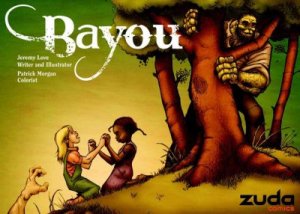
“M, I, crooked letter, crooked letter, I, crooked letter, crooked letter, I, humpback, humpback, I.” One of the main characters in Tom Franklin’s atmospherically dark novel refers to Mississippi as “the crooked letter,” from the jump rope chant that spells the name of the state. “Welcome back to the crooked letter,” he leaves on an old friend’s answering machine when he learns the friend has moved back to the rural hamlet of Chabot after more than twenty years away. The novel is as much about isolation, the tenuous friendships of children, family dysfunction, adolescent awkwardness, suspicious rumors, and race relations in the 1970s in the South as it is about the mystery of two missing girls. It is a deep, rich novel about two characters, Larry Ott, a lower-middle-class white boy, and poor African-American Silas Jones, now nicknamed “32” from his college baseball uniform.
In the present day, Larry Ott still lives in the house where he grew up. His father is dead and his mother, suffering from dementia or Alzheimer’s, is in a nursing home. Larry owns the auto garage his father once owned— Ottomotive Repair—but rarely gets any business, as the townspeople steer clear of him. He reads books that he gets from his book clubs, mostly horror novels. He tends his chickens and visits his mother when she’s having “a good day.” He drives his father’s 1970’s model red Ford pickup, with an umbrella in the gun rack. He can’t own a gun “because of his past.” A local girl has been missing for eight days now, and a county investigator, familiar to Larry, stops by his house with a warrant. “You understand,” the investigator says. Larry does understand, and lets him in. Larry sits outside while the investigator searches through every room of his house, looking for any sign of the missing Rutherford girl.
Twenty-five years ago, another girl, Cindy Walker, went missing, and Larry was the last one known to see her alive. He had taken her to the drive-in, or at least that’s what everyone thought. That Larry had a date was big news in the high school rumor mill. It was the only date Larry would ever have. When Cindy disappears after that night, Larry is fingered as guilty even though there is no evidence linking him to a crime, and Cindy’s body is never found. Small town rumors run rampant, and “Scary Larry” is shunned.
As a child, Larry is peculiar, asthmatic and weak. His father, who loves his bourbon, taunts him, calls him a Momma’s boy and laughs at him for reading books all the time. He says Larry will never amount to anything, will never learn how to fix cars. “[Y]ou can’t unscrew a god dang bolt to save your life, can’t charge a dad blame battery.” His mother prays for Larry. “Please take that stuttering away, and please help him breathe right, and please send him a special friend, Lord, one just for him.”
Silas Jones becomes his friend, but only for a short while, and not when people can see them together at school. It’s an awkward friendship, but the only one Larry has as a child. Larry tells Silas fascinating things about nature and the woods around his property, and lends him a hunting rifle he’s taken from his father. He tries to interest Silas in reading, but Silas doesn’t care about books. Silas gets to know other kids at school, and by the time the two are in high school, Silas rejects Larry the way the more popular kids do.
After Cindy Walker disappears and Larry is blamed, the break between the Larry and Silas is complete. Silas moves out of town, goes to college, enrolls in the Navy, and then the police academy, and eventually moves back to Chabot to become a constable. Larry tries to get in touch with his old friend, but Silas ignores his calls. It isn’t until the Rutherford girl is missing for over a week and the town again begins to blame Larry that Silas realizes he has to confront memories from the past. He knew Larry better than anyone twenty-five years ago, but he stayed silent when people were pointing the finger at him for Cindy Walker’s disappearance. Silas doesn’t want to let that happen again.
This is much more than a mystery novel. When I think about the book, it’s not the mystery of the missing girls I recall, but the awkward friendship between Larry and Silas “32” Jones. The sense of place is strong. Franklin’s description of the small, Southern town and its characters is vivid. It’s a mystery novel I’ll remember for a long time.
Check the WRL catalog for Crooked Letter, Crooked Letter.

Read Full Post »




 If you asked people what they think of when they hear the term “American mythos” many would undoubtedly call to mind Cowboys and Indians and other aspects of the Wild West, unaware of the vibrant and complex stories and traditions of Southern Folklore. Bayou is a beautifully-rendered Alice in Wonderland-style fairytale set in Mississippi during the Depression. It is a uniquely Southern world, filled with mud and Spanish moss, concurrently embracing and fighting against the legacy of slavery.
If you asked people what they think of when they hear the term “American mythos” many would undoubtedly call to mind Cowboys and Indians and other aspects of the Wild West, unaware of the vibrant and complex stories and traditions of Southern Folklore. Bayou is a beautifully-rendered Alice in Wonderland-style fairytale set in Mississippi during the Depression. It is a uniquely Southern world, filled with mud and Spanish moss, concurrently embracing and fighting against the legacy of slavery.














